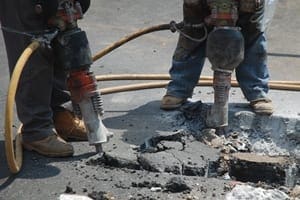When most people think about indoor air quality, they usually think about pollution. The first…

No Such Thing as “Good Vibrations” at Work
 The Beach Boys first sang all about “Good Vibrations” way back in 1966, but there’s no such thing when it comes to working on the job.
The Beach Boys first sang all about “Good Vibrations” way back in 1966, but there’s no such thing when it comes to working on the job.
According to the 2010 Global Burden of Disease report, chronic pain is the single leading cause of disabilities worldwide. It places a very heavy burden on the world’s healthcare systems-caring for afflicted patients costs hundreds of billions of dollars each year. Chronic pain is also a major concern for employers, who lose billions of dollars as a result of absences and reduced productivity. Given the economic costs involved (not to mention the quality-of-life implications for individuals), it’s no surprise that both public- and private-sector organizations are very interested in understanding the causes of chronic pain-especially those that might related to the workplace.
Recent research suggests that one of the primary work-related causes of chronic pain is long-term exposure to vibration. This research concentrates on two primary forms of repetitive vibrations: hand-arm vibration (HAV, experienced by workers who use vibrating hand tools all day on the job) and whole-body vibration (WBV, experienced by people who work all day in a constantly vibrating machine like a train or a helicopter). At least five million workers are exposed to constant hand-arm vibration in their workplaces, and roughly the same number of workers is exposed to whole-body vibration. Both forms of vibration have been shown to greatly increase the workers’ risk of developing chronic pain.
Regular exposure to HAV can cause permanent injuries, characterized by the whitening of one or more fingers when exposed to cold, tingling and loss of sensation in the fingers, loss of touch sensitivity, loss of grip strength, bone cysts in the fingers and wrists, and constant pain. These symptoms can be signs of vibration white finger (VWF) or of related conditions such as carpal tunnel syndrome or ulnar tunnel syndrome.
Regular exposure to WBV can be even more debilitating than exposure to HAV. According to research published recently in the Archives of Environmental & Occupational Health, workers such as train engineers, truck drivers, and machine operators who are consistently exposed to whole-body vibrations are at significantly higher risk of developing chronic lower back and neck pain than other workers. In the study, locomotive engineers and other workers who were constantly exposed were compared with coworkers not exposed to constant vibration, and the differences were clear. The train engineers were about twice as likely to experience frequent lower back and neck pain.
Similar results were found in a study of 163 helicopter pilots who were compared with a control group of 297 non-flying air force officers. Because flying officers must document their “air time” in personal flight logs, an accurate assessment could be made of the time that the helicopter pilots were exposed to whole-body vibration and their rates of chronic pain injuries. The pilots who had flown more than 2,000 hours had far more occurrences of both transient and chronic back pain than the non-flying officers, and there was a strong association between the number of hours they flew and the number of back pain attacks.
So if your job exposes you to constant vibration-be it hand-arm vibration or whole-body vibration-and you suffer from chronic or recurring musculoskeletal pain, there may be a connection. We encourage you to talk with your chiropractor about the situation. As experts in diagnosing and treating conditions that affect the musculoskeletal and nervous systems-including work-related injuries-we may be able to help reduce the pain and offer suggestions to lower your risk and prevent future problems. Call or visit the office today!




